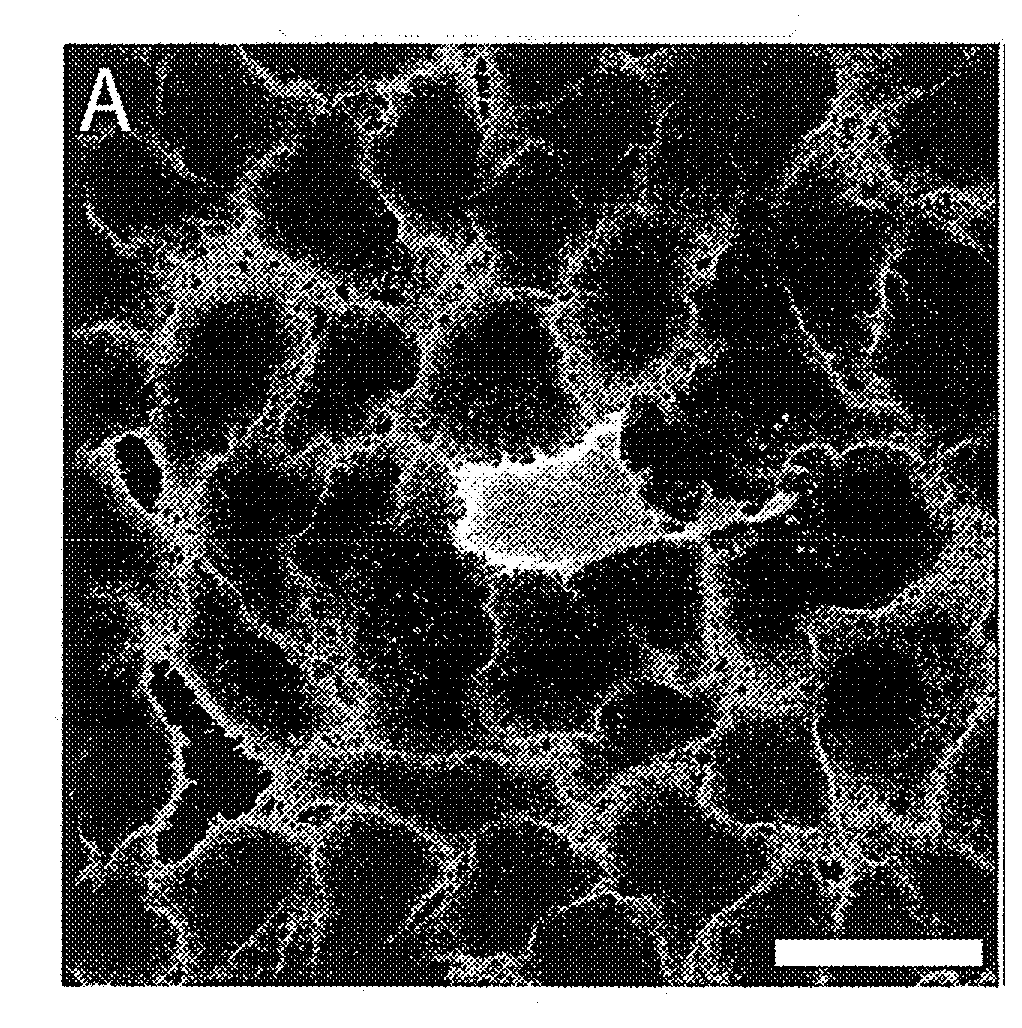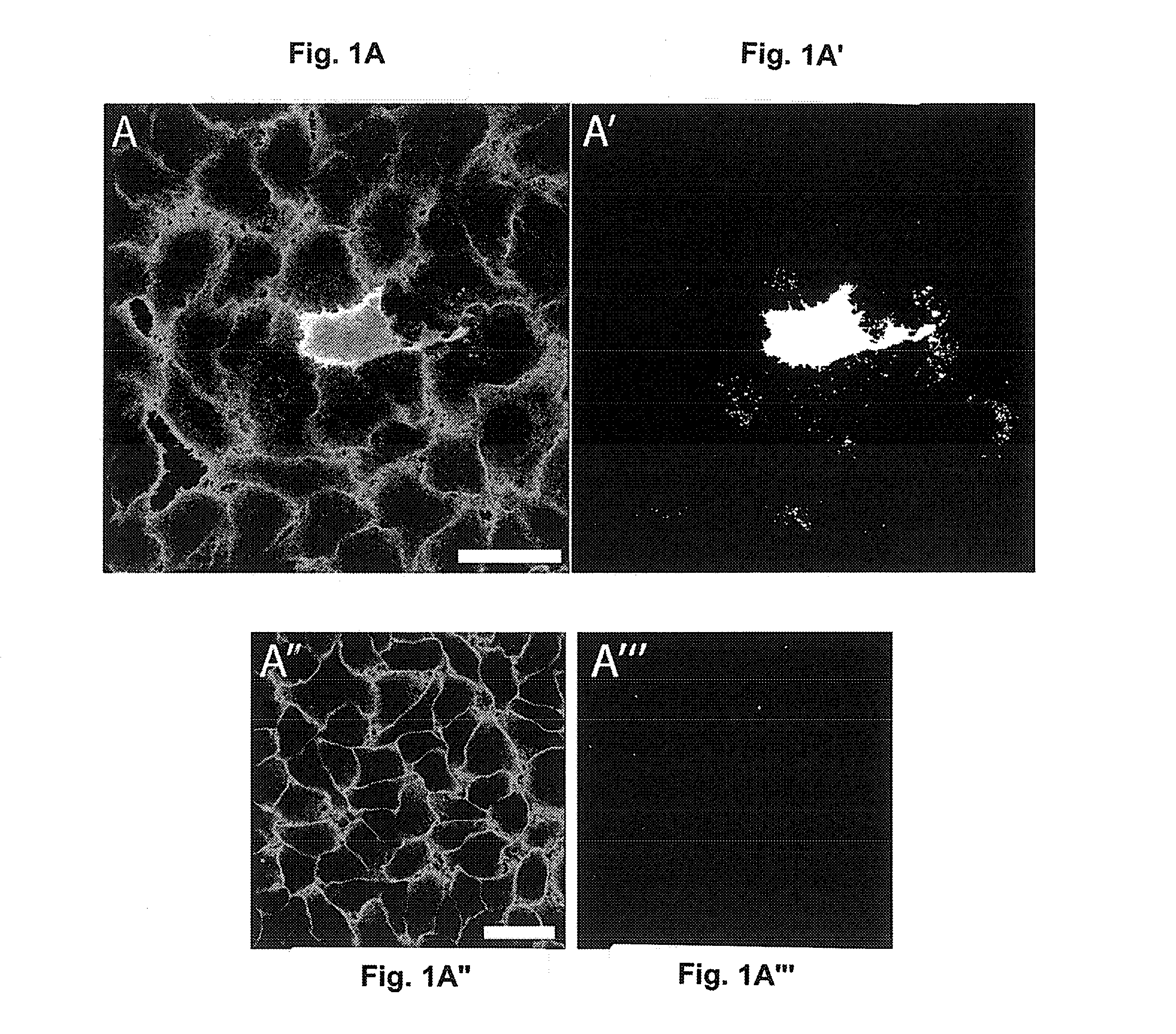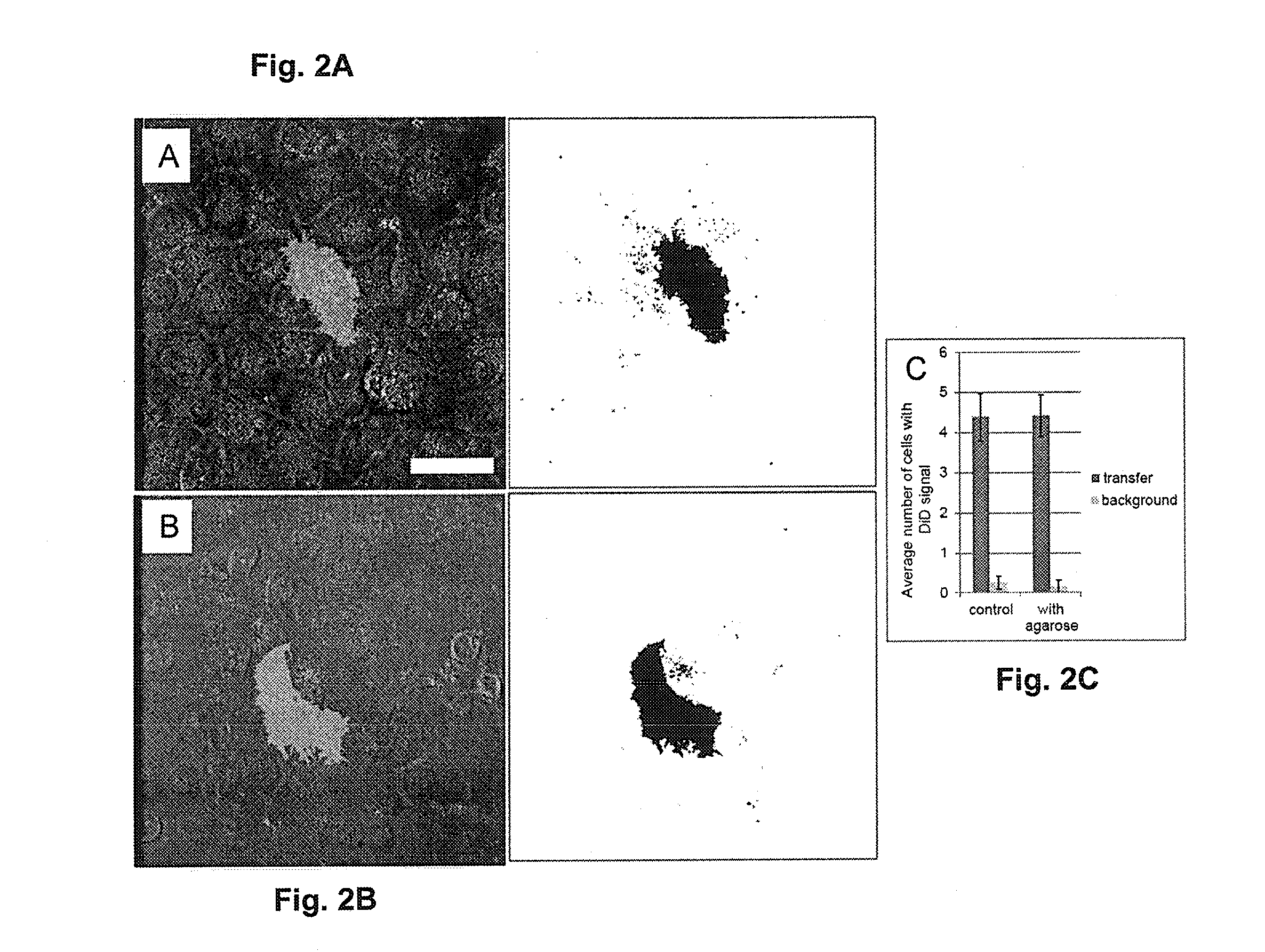Quantitative analysis of contact-dependent cell-to-cell transfer and disease transmission
a cell-to-cell transfer and quantitative analysis technology, applied in the field of quantitative analysis of cell-to-cell transfer transport processes, can solve the problems of difficult, if not impossible, difficult to create homogeneous conditions with equal spacing between cells, and fragile structures of tnts between mammalian cells, and achieve high accuracy
- Summary
- Abstract
- Description
- Claims
- Application Information
AI Technical Summary
Benefits of technology
Problems solved by technology
Method used
Image
Examples
example 1
Determination of Contact-Dependent Cell-to-Cell Organelle Transfer
a) Cell Culture, Staining and Co-Culture
[0098]HeLa-Kyoto cells were cultured in DMEM:F12 supplemented with 10% fetal calf serum and 1% penicillin / streptomycin (Invitrogen Detection Technologies, Carlsbad, Calif., USA) on 24-well microscopy plates (Greiner Bio-One GmbH). Cells were maintained under humidified air supplemented with 5% CO2 at 37° C. and plated with a density of approximately 35 000 cells / cm2. After 24 hours, 200 ng (5 μl) / ml lipid analog Vybrant® DiD Cell-Labelling solution (Invitrogen Detection Technologies, Carlsbad, Calif., USA) was added to the plated cells in culture medium, incubated at 37° C. for 20 min wherein tilted 5 times. After the incubation period, the culture medium was exchanged 4 times within 2 hours. Donor DiD-stained cells were washed twice with phosphate buffered saline PBS (Sigma-Aldrich, St. Louis, Mo. 63103, USA) and harvested by trypsinization (0.25% trypsin / EDTA) (Sigma-Aldrich, ...
example 2
Contact-Dependent Transfer of Transferrin Receptor
[0122]Several studies have shown the presence of organelles stained with fluorescent endocytosed lipid analogues and their subsequent transfer to connected cells, suggesting that endosomal sub-compartments may play a role in TNT-mediated organelles transfer (Gurke et al., Exp Cell Res. 2008 10; 314(20):3669-83). We addressed this question by testing whether the transfer of the Transferrin receptor (Tf-R), a well-known marker of recycling endosomes, occurs between cell in low donor / acceptor ratio co-cultures at confluence. For this purpose, we transiently transfected the transferrin receptor fused to mCherry (Tf-RmCherry) in HeLa-Kyoto cells, which has been widely used to study intracellular trafficking of the transferrin receptor, and subsequently imaged.
a) Plasmid mCherry-Tagged Transferrin Receptor and Transfection
[0123]HeLa-Kyoto cells, provided by Dr. R. Pepperkok (EMBL, Heidelberg, Germany), were cultured in DMEM (GIBCO®, Invitr...
example 3
Manipulation of Cell-to-Cell Transfer by siRNA Knockdown
[0142]To investigate the transfer of DiD-stained organelles under gene knockdown, 24-well normal culture plates and 24-well plates with microscopy suitable bottom were coated with gelatine containing siRNAs and lipofectamine by the following procedure. 0.2% w / v Gelatine was dissolved in water and filtered (0.45 μm pore size). 1.37 g Sucrose was dissolved in OptiMEM. 6 μl Sucrose / OptiMEM solution was mixed with 1.75 μl Lipofectamine™ 2000, 1.75 μl water and 10 μl silence-select siRNA (3 μM), and this mix incubated for 20 minutes at room temperature together with 14.5 μl gelatine solution. A 2-step 1:50 dilution in water was carried out, resulting in 1.6 ml volume. 300 μL solution / well were dried in a vacuum centrifuged at 60° C., followed by a cooling step through application of vacuum at 37° C. and stored in sealed boxes containing silica gel drying pearls as desiccant for up to several months. For experimental setup, HeLa-Kyot...
PUM
 Login to View More
Login to View More Abstract
Description
Claims
Application Information
 Login to View More
Login to View More - R&D
- Intellectual Property
- Life Sciences
- Materials
- Tech Scout
- Unparalleled Data Quality
- Higher Quality Content
- 60% Fewer Hallucinations
Browse by: Latest US Patents, China's latest patents, Technical Efficacy Thesaurus, Application Domain, Technology Topic, Popular Technical Reports.
© 2025 PatSnap. All rights reserved.Legal|Privacy policy|Modern Slavery Act Transparency Statement|Sitemap|About US| Contact US: help@patsnap.com



